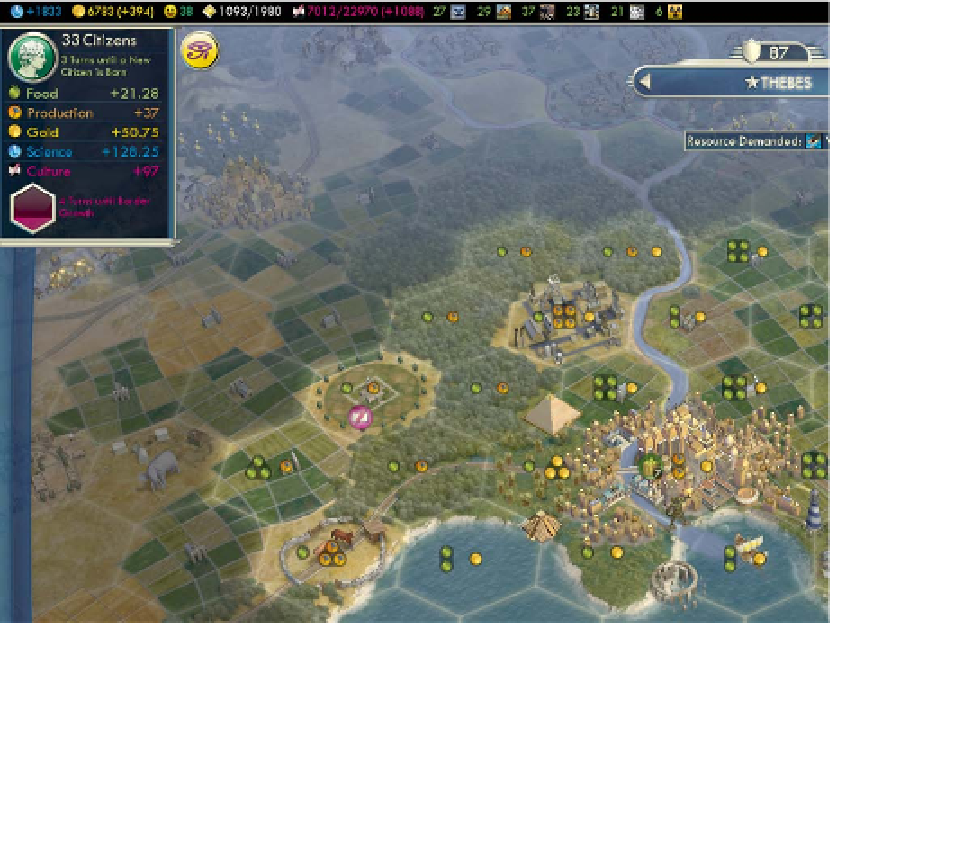Game Development Reference
In-Depth Information
Feedback loops that work to maintain a balance within a system are called
negative
feedback loops
. Negative feedback loops are commonly used in the design of electrical
appliances. A thermostat is a typical example: A thermometer detects the tempera-
ture of the air, and when it becomes too low, it will activate a heater. The heater
will then cause the temperature to rise, which in turn will cause the thermostat to
turn the heater off again. A speed governor on a machine is another: When the
machine speeds up (perhaps because the load on it has been reduced), the governor
reduces the machine's power source to make it slow down. When the machine slows
down, the governor increases the power source to make it speed up. This keeps the
machine's speed constant. Speed governors are used to ensure that a machine works
at its most efficient rate of speed and cannot run dangerously fast if the load on it is
suddenly removed.
Negative feedback is frequently found in games. For example, in
Civilization
(
Figure 3.4
), the population of a city is affected by negative feedback that is not
unlike the predator/prey example. As your cities grow, the growing population
demands more and more food. This causes the city to grow to a stable size that is
supported by the terrain and the player's current level of technology.
FIGURe 3.4
Civilization V
showing
population and food
supply of the city
of Thebes

